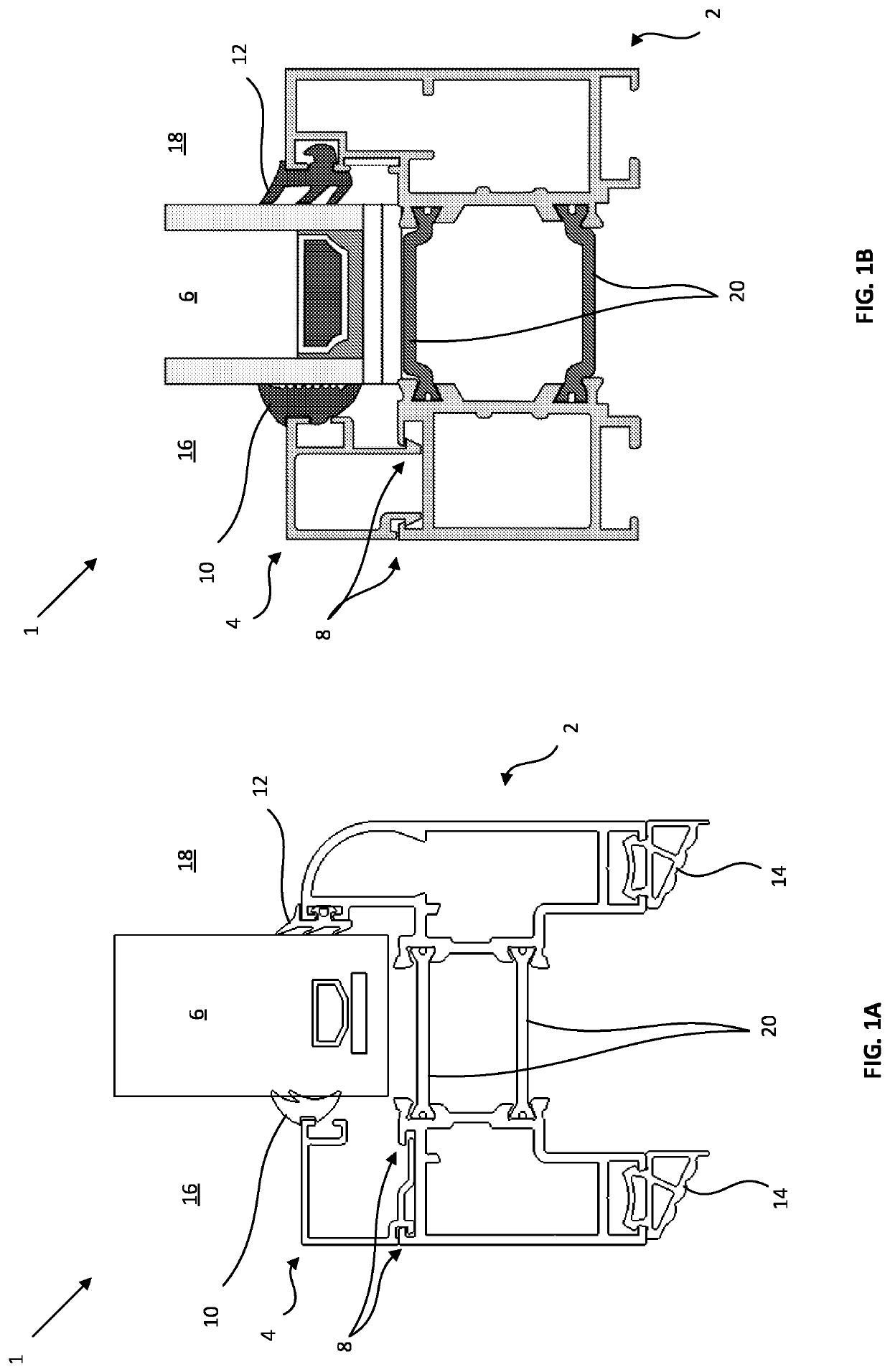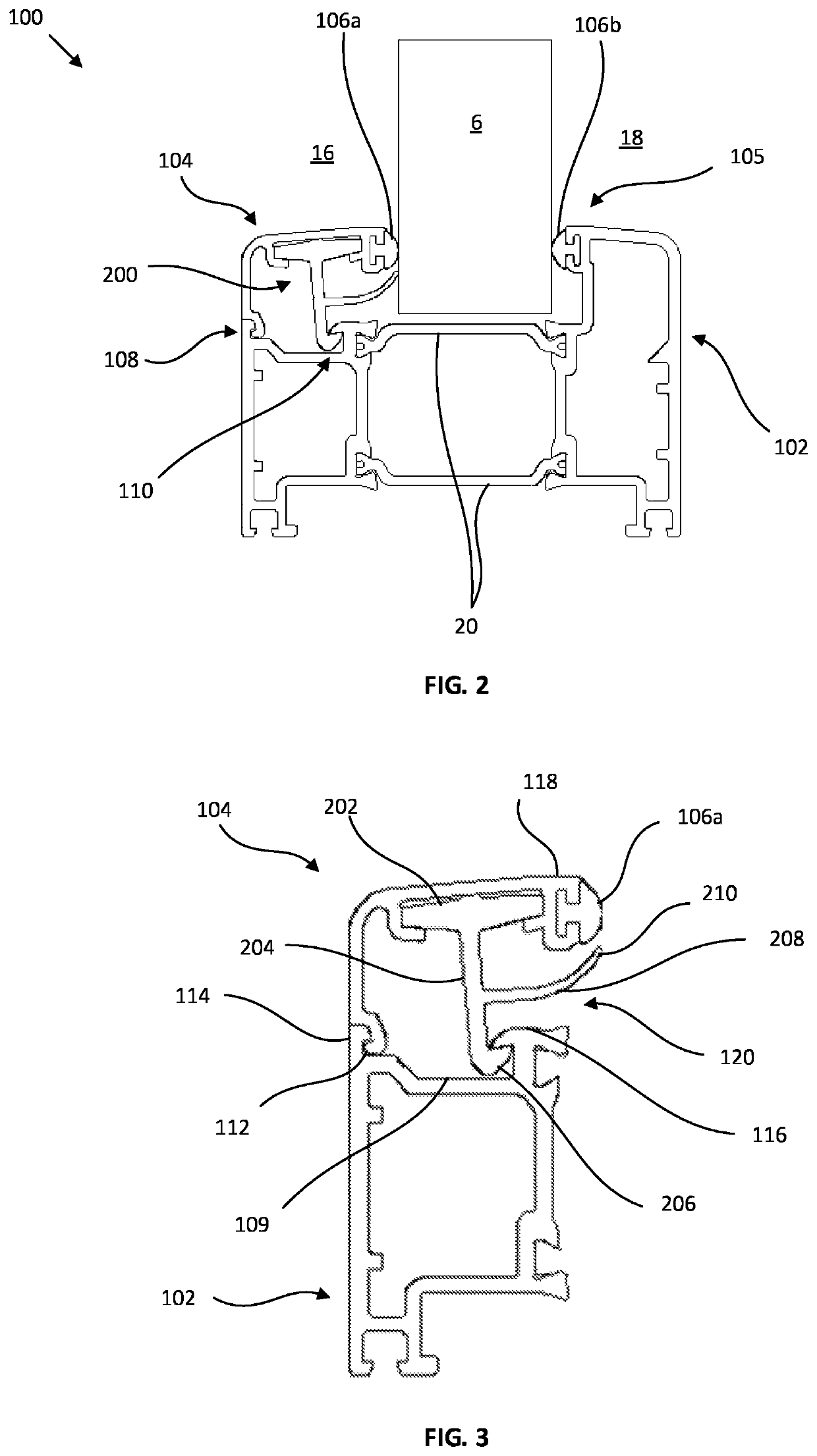Bead for a frame member
a frame member and bead technology, applied in the field of beads for frame members, can solve the problems of time taken to install doors or windows, door or window may not allow disassembly, and requires considerable skill and time to perform, and achieve the effect of reducing the time to install and/or remove or replace parts, superior properties, and easy clipping
- Summary
- Abstract
- Description
- Claims
- Application Information
AI Technical Summary
Benefits of technology
Problems solved by technology
Method used
Image
Examples
Embodiment Construction
[0032]While the subsequent description is in relation to windows or doors having a glazing bead to secure a glazing unit, typically a sheet of glass, the application of the present invention is not limited to windows and doors, but to any such system having a glazing unit secured by a glazing bead.
[0033]FIGS. 1A & 1B illustrate prior art frame systems. FIGS. 1A and 1B each illustrate a frame system 1 having a frame 2 and a bead 4 which act to compress glazing 6 between a wedge gasket 10 and a flipper gasket 12. The bead 4 is shown secured to the frame 2 on the inside 16 of a space by two mechanical snap-fit joints. The frame system 1 is also shown incorporating a thermal break 20 to improve the thermal efficiency of the frame system 1. The thermal break spaces the two halves of the frame member 2 and traps a pocket of air within the frame 2 to reduce the thermal conductivity of the frame 2. Outer frame gaskets 14 are also shown secured to the frame 2 of FIG. 1A to provide a watertig...
PUM
 Login to View More
Login to View More Abstract
Description
Claims
Application Information
 Login to View More
Login to View More - R&D
- Intellectual Property
- Life Sciences
- Materials
- Tech Scout
- Unparalleled Data Quality
- Higher Quality Content
- 60% Fewer Hallucinations
Browse by: Latest US Patents, China's latest patents, Technical Efficacy Thesaurus, Application Domain, Technology Topic, Popular Technical Reports.
© 2025 PatSnap. All rights reserved.Legal|Privacy policy|Modern Slavery Act Transparency Statement|Sitemap|About US| Contact US: help@patsnap.com



